CONNECTION BETWEEN RUSSIA AND MALAYSIA: THE HERITAGE OF N.N. MIKLOUHO-MACLAY
Introduction
Malaysia is one of the most economically developed Countries in Southeast Asia. The Country is rightfully titled one of the four «New Asian tigers» along with Indonesia, the Philippines and Thailand due to its high rate of development.
Relations between Russia and this Country are also developing rapidly. The diplomatic relations between the USSR and Malaysia started on April 3, 1967. Since the beginning of the XXI century and till the present time the volume of bilateral trade between the Countries has increased from US$400 million to US$2.9 billion (7 times). Moreover, bilateral cooperation in politics is also developing. Back in 2002-2003, the leaders of the two Countries, Vladimir Putin and Mahathir Mohamad, exchanged official visits. On September 8, 2012, at the APEC summit in Vladivostok, the President of Russia Vladimir Putin discussed prospects for expanding trade and economic cooperation between the two Countries with the Prime Minister of Malaysia Najib Razak, who visited Russia in May 2016 to attend the Russia-ASEAN anniversary summit in Sochi.
Malaysia is also a founding member of the Association of Southeast Asian Nations (ASEAN). This intergovernmental organization was created on 8 August 1967 and initially consisted of Indonesia, Singapore, Thailand, the Philippines and Malaysia. At the present, the organization also includes Cambodia, Brunei, Myanmar, Laos and Vietnam. Some of the ASEAN aims and purposes are to accelerate economic growth, social progress, cultural development, to promote peace and stability in Southeast Asia. It is worth noting that Russia is actively cooperating with the Association of Southeast Asian Nations (ASEAN). In 2018, the Dialogue Relations between them elevated to a Strategic Partnership.
Traditionally, Russia attaches great importance to the educational direction of relations with Malaysia, which contributes to a more intensive, productive and mutually beneficial dialogue. Knowledge of the languages, distinguished figures in literature and geography, as well as an understanding of each other’s culture and traditions, will allow us to actively develop relations between the peoples of our Countries.
However, the connection between Russia and Malaysia began long before the second half of the XX century. In 1874-1875, the outstanding Russian humanist, scientist and traveler N.N. Miklouho-Maclay was conducting research on the Malay Peninsula, the mainland territory of the present Malaysia.
Life story of Nikolay Nikolaevich Miklouho-Maclay (1846-1888 гг.)
In the world and national history N.N. Miklouho-Maclay is an outstanding humanist, scientist, traveler and public figure who always followed the humanistic principles of respect for the culture and traditions of the peoples of the world, and fought for the rights of residents of Southeast Asia and Oceania.
The future world-famous explorer and traveler was born in Yazykovo-Rozhdestvenskoye village of Novgorod Governorate in 1846. As a student, he was looking for himself: he studied in Saint-Petersburg and Germany at various faculties. Subsequently, N.N. Miklouho-Maclay chose the medical faculty at the University of Jena, as the scientist was well aware that his further research would require knowledge in several sciences. The Russian scientist can fairly be called a naturalist or a generalist (a person with a wide array of knowledge on a variety of subjects).
In 1866-1869, Miklouho-Maclay made expeditions to North Africa, mainly to study marine fauna. Already during the trip along the Red Sea сoast, the traits that determined the future life of the Russian scientist were revealed – a penchant for difficult and dangerous adventures, a deep interest in the way of life and culture of the peoples of the world. In 1869 Miklouho-Maclay returned to Saint-Petersburg and a year later the scientist presented to the Imperial Russian Geographical Society (IRGS) his project of a multi-year expedition to the Pacific Ocean, during which he planned to study its northern part and conduct zoological, anthropological and ethnographic research. IRGS accepted the project and promised to assist.
Already in the process of preparing for the expedition, the scientist’s plans have changed a lot. Scientific literature, conversations and correspondence with leading Russian and world scientists gave N.N. Miklouho-Maclay an idea to start this long-term research in New Guinea — a huge Island in Oceania, still unknown place of the planet for Europeans.
With an extraordinary talent and passion for scientific knowledge N.N. Miklouho-Maclay has been conducting ethnographic and anthropological research in Southeast Asia, as well as in all cultural areas of Oceania (Melanesia, Polynesia, Micronesia) for more than 15 years. Most of the works of the Russian humanist scientist are devoted to the inhabitants of the northeastern coast of New Guinea (the Maclay Coast), among whom he had lived for two and a half years and visited those places three times (1871-1872, 1876-1877 and 1883). Miklouho-Maclay managed to establish friendly contact and good relations with the residents of the Maclay Coast, as well as to learn some of their languages. With his patience, kindness, responsiveness and courage N.N. Miklouho-Maclay won the trust, love and loyalty of the local residents. In fact, he “opened” New Guineans to the outside world. It was the place where Miklouho-Maclay had lived most of the time spent in New Guinea, and called this coast the Maclay Coast “by right of the first European settled there, who explored the coast and achieved scientific results”.
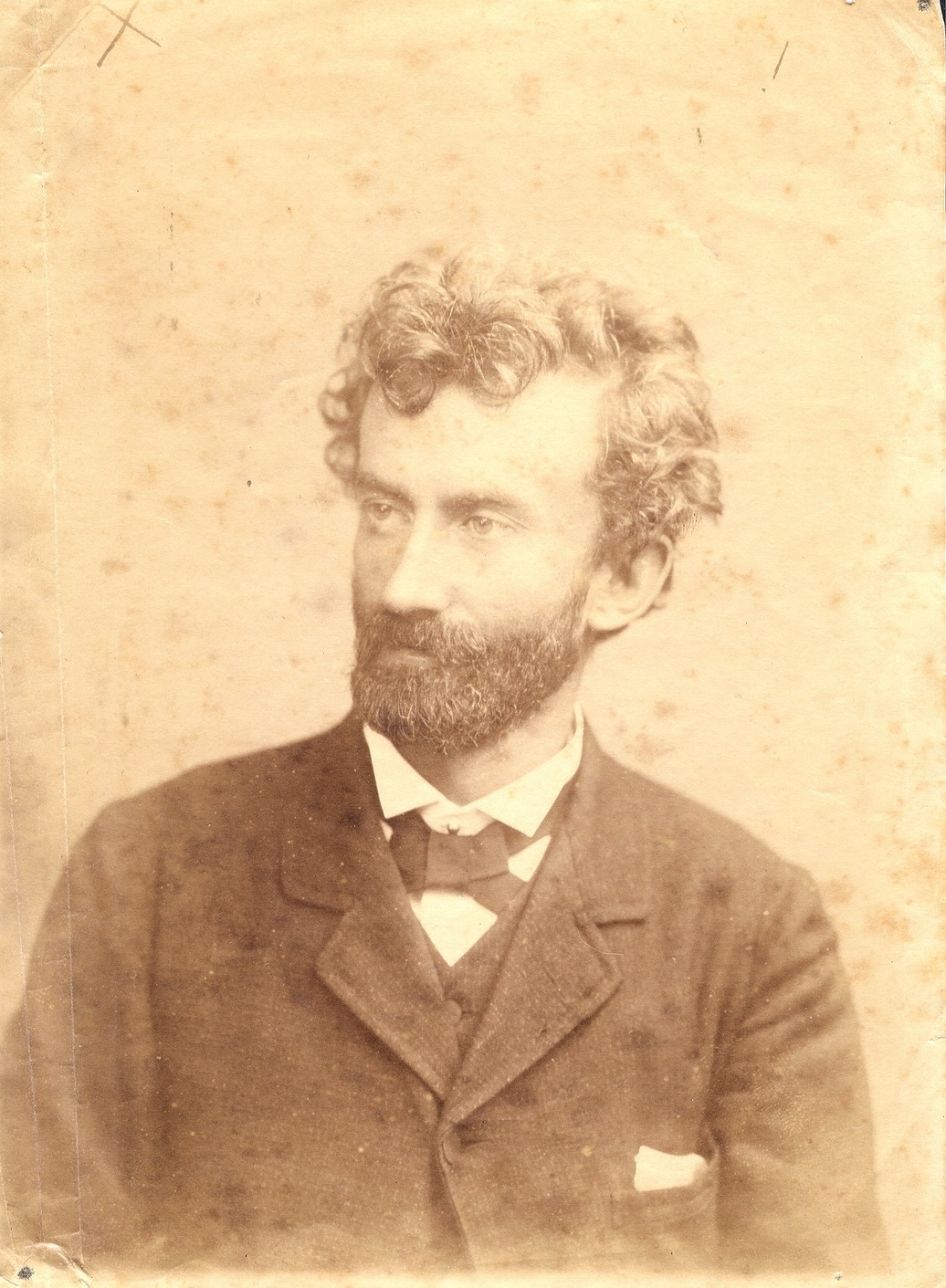
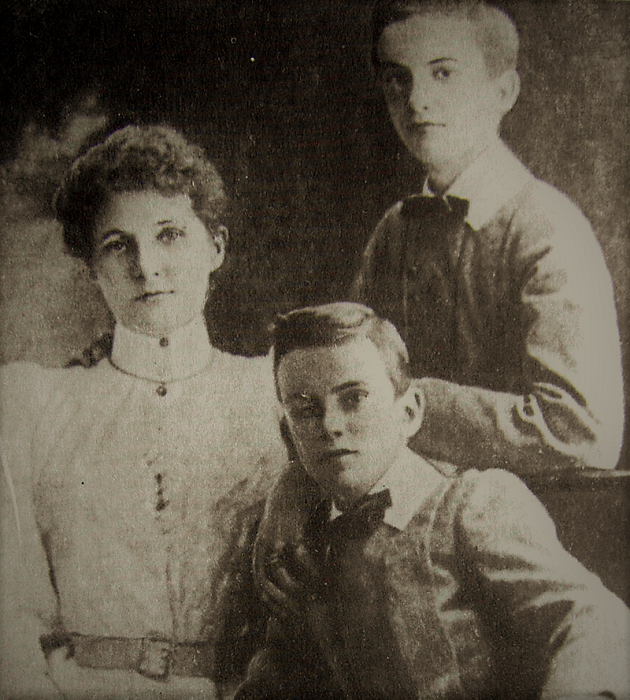


During his expeditions to Southeast Asia and Oceania, the Russian scientist described in detail the economy, everyday life, material culture, customs and traditions of local residents, paying special attention to their original art. The diary records of N.N. Miklouho-Maclay still remain an unsurpassed source on ethnography of New Guinea, because of the accurate factual information, since the Russian scientist tried to refrain from adding various guesses and hypotheses to his personal observations.
The scientist’s drawings made during the expeditions are also a valuable ethnographic and anthropological source, because they «differ in the accuracy of proportions, details, and clearly reflect both the anthropological type and the human personality». N.N. Miklouho-Maclay made more than 700 drawings.
It was during the time of N.N. Miklouho-Maclay that human races and their features were ardently debated. Many Western scientists have tried to prove that human races are not equal. These theories were later used either by slaveholders or in order to justify colonial expansion. The danger of such ideas was obvious to Miklouho-Maclay. A number of European scientists considered Papuans an intermediate link between apes and humans, and relied on rather absurd arguments about the «tuft-like» growth of hair and the «roughness» of skin of New Guineans. During his expeditions to the northeastern coast of New Guinea, N.N. Miklouho-Maclay found irrefutable evidence that the local people in their physical and mental properties do not differ from Europeans, which showed the inconsistency of racist views. With the example of the Papuans of the North-East of the Island of New Guinea Miklouho-Maclay proved to the whole world that there were no superior or inferior race and all people are equal by nature. Moreover, Nikolay Miklouho-Maclay throughout his life fought for the rights of the peoples of the Pacific Ocean, protecting them from despotism of European slave traders and colonizers.
Nikolay Miklouho-Maclay is the author of about 160 scientific papers in ethnology, anthropology, meteorology and oceanology, etc., published in Russian, English, German and
other European languages. Moreover, the results of his research formed the basis for a number of publications around the world on the life of Miklouho-Maclay, one of which is the Russian six-volume edition (in seven books), the most complete collection of works to date, which soon is going to be reissued.
Almost a century and a half has passed since the first expeditions of Miklouho-Maclay to Southeast Asia, as well as to the distant Island of New Guinea. During this time, the world has undergone huge changes, but the scientific and social feat of the Russian scientist and his rich heritage still serve for the benefit of friendship and cooperation around the world. The material collected by Miklouho-Maclay is still relevant to science and everyday life, and the Russian traveler’s accurate data of the inhabitants of Southeast Asia and Oceania has become the first true evidence of the population of this region. Moreover, the works and humanistic principle of N.N. Miklouho-Maclay give modern people an idea of the need to preserve traditions, as well as respect for the traditions and culture of the peoples of the world.
Noteworthy, N.N. Miklouho-Maclay always considered himself a zoologist, but later he was acknowledged by world and Russian science as an ethnographer. It is no coincidence that his humanistic ideas are the embodiment of the commandments of an ethnographer:
1. Ethnography is the crown of all the humanities because it makes a comprehensive study of all peoples and all mankind, past and present;
2. You shall not make for yourself an idol of your people, your religion, or your culture. You should know that all people are created equal: there is no Greek or Jew, no white or coloured. He who knows one ethnos knows none; he who knows one religion knows none;
3. You shall not profane science, or defile ethnography by career-seeking – a true ethnographer is he who nourishes enthusiasm for science and bears love for mankind and Man;
4. Six days you shall labour, but on the seventh day, you shall draw conclusions. Remember that you owe a debt to the public and science;
5. Honour your great predecessors and teachers in academic and public life, and you will be duly honoured;
6. You shall not kill science with forged facts, superficial observations, and hasty conclusions.
7. You shall not change your once chosen profession of an ethnographer. He who has entered upon the path of ethnography, shall not wander from it;
8. You shall not plagiarise;
9. You shall not bear false witness against your neighbour, other peoples, their spirit and rites, customs and mores, etc. Love your neighbour more than yourself;
10. You shall not impose your culture on the ethnos you explore. Treat this ethnos with care and alertness, love and attention, whatever the stage of their cultural development – and they will strive to rise to the level of higher cultures.
Copies of drawings from the diary of Nikolay Miklouho-Maclay. Northeast of New Guinea, Maclay Coast, 1870s. Kept in the Archives of the Russian Geographical Society, St. Petersburg.
In addition, N.N. Miklouho-Maclay lived in Australia for about seven years, where he received a warm welcome: the traveler quickly became close to Australian scientists and soon became a member of the Linnean Society, the leading scientific organization in Australia. At the same time, Miklouho-Maclay traveled deep into the Australian continent, where he conducted zoological and anthropological research, as well as paleontological excavations. In Australia, Nikolay met his future wife, Margaret Robertson, the daughter of the Premier of New South Wales. Later they had two sons, Alexander and Vladimir (Nils and Allan).
Nikolay Miklouho-Maclay’s wife Margaret Robertson and thier two sons Alexander and Vladimir (Nils and Allan)
In 1886, after more than 20 years of expeditions to Southeast Asia and Oceania, N.N. Miklouho-Maclay returned to Russia, where he became a living legend, and then brought his wife and sons to Saint-Petersburg. After a long struggle with an illness caused by complications from malaria, dengue fever, and rheumatism, N.N. Miklouho-Maclay died suddenly on April 14, 1888, at the age of 41.
After the death of Nikolay Nikolaevich, his widow and children returned to Sydney. Until 1917, she received a pension for the children support from the Russian Government. She gave her husband’s works and collections to the Russian Geographical Society, and now they are stored in Saint-Petersburg, in the Museum of Anthropology and Ethnography named after Peter the Great (Kunstkamera).
For his contribution to world and national science, as well as humanistic ideas that were long ahead of their time, in 1996, N.N. Miklouho-Maclay was acknowledged by UNESCO as a «Global citizen» in honor of the 150th anniversary of his birth.
Of course, Nikolay Miklouho-Maclay is one of the most outstanding scientists and travelers of the second half of the XIX century, who made an invaluable contribution to world science, and his humanistic ideas are still relevant today. In the time of aggravation of interethnic problems in almost all regions of the world, the progressive ideological heritage of Miklouho-Maclay on the equality of races and peoples, on the inadmissibility of violent suppression of cultures, on the imposition of other people’s stereotypes, on the implementation of colonial or violent cultural expansion are of particular importance. Results of the scientific research and published books are a solid and scientifically impeccable tool, a basis for countering reactionary power and nationalist tendencies, which will become a powerful weapon in fostering a sense of tolerance among the present generation.
N.N. Miklouho-Maclay’s research on the Malay Peninsula (1874-1875)
The first N.N. Miklouho-Maclay’s expedition into the Malay Peninsula (December, 1874 – February, 1875)
The history of N.N. Miklouho-Maclay’s travels on the territory of today’s Malaysia began in 1874, when the steamship «Namoa», set off with the Russian scientist from Batavia (now Jakarta, Indonesia), entered the Harbor of Singapore, a port on a small eponymous island in the southern part of the Malay Peninsula, where N.N. Miklouho-Maclay went into the jungles of the Johor Sultanate.
Taking into account the immense natural resources of the Peninsula, especially the huge tin deposits, English merchants used to send petitions from Singapore to London calling for the capture of the Malay Sultanates, a number of which are now part of Malaysia.
Sir Andrew Clarke, appointed as the Governor of the Straits Settlements in September 1873, was ordered to annex them to the British Empire, and not only the southernmost Johor Sultanate (now the same name State of Malaysia), which at that time was under protectorate of the British authorities. Within a year, A. Clarke conquered two large Sultanates in the western part of the Peninsula, Perak and Selangor (now the same name States of Malaysia).
Soon after the arrival of N.N. Miklouho-Maclay, the English Governor cordially received the Russian traveler, but did not do it without intent. For him, N.N. Miklouho-Maclay was not just a famous traveler and humanist scientist, but a person who would go deep into the Peninsula and collect information useful for further expansion of the colony. Later, the Russian scientist understood the main reason of the plans and kept safe the collected information about the Malay population. Interestingly, since the N.N. Miklouho-Maclay’s expeditions in many areas of present-day Malaysia, no European reached those places, therefore the Governor and his subordinates had no information about the terrain, rivers, population, relations between local princes and various tribes. At that time, there was another very remarkable figure – Abu Bakar titled by the British Government as Maharaja of Johor. Abu Bakar spoke excellent English, had been to the Great Britain, and was willing to adopt European technical innovations, but remained adherent some of the customs and religion of his ancestors.
Since N.N. Miklouho-Maclay was disturbed by the noise and bustle at the hotel during his scientific work, he gladly accepted the invitation of Sultan Abu Bakar to move to his Palace in Johor Bahru (now the second most populous city after Kuala Lumpur), the capital of the Johor Sultanate, to continue preparing for a trip to the jungles of Malacca. Before the expedition to the
Malay Peninsula, the Sultan provided the Russian scientist with a security certificate written in Malay Arabic script. It prescribed the officials and Chiefs of the villages to help Miklouho-Maclay, who «wants to explore the forests, observe and draw the people who inhabit them.»
Sultan Abu Bakar’s palace in Johor Bahru
Drawing by Nikolay Miklouho-Maclay
Already on December 15, 1874, Miklouho-Maclay set out on his first expedition to the lands of today’s Malaysia, accompanied by assistants from the settlement of Lenga (now mukim of Malaysia in Johor).
At the beginning of his trip to Malacca, N.N. Miklouho-Maclay went down the Muar river on a flat-bottomed boat and visited Kepong village (now a suburb of Kuala Lumpur), where a local Elder wished to accompany the famous traveler to the next Malay village. N.N. Miklouho-Maclay carefully studied the way of life, customs and traditions of the Malays in the villages he visited, but focused on the search and study of orang utans (in Malay, orang –
«person, man», utan –»forest»), which he believed might be related to the natives of New Guinea and generally belong to the «Melanesian race». The «forest people» in the Johor Sultanate mostly belonged to the ancient population of Malacca – the Jakun tribes. At the request of N.N. Miklouho-Maclay, the Chiefs Malay villages arranged meetings with the «forest people», and later in the forests of Malacca, the researcher sometimes came across their temporary settlements, usually located in a forest clearing or a bank of river. In these cases, he would stop for a day or two and immerse himself in the study of the culture, life, and anthropological type of orang utans.
With an ultimate care, the scientist compiled dictionaries of the main words from the local dialects, noting the similarities and differences from the other Malay equivalents. Moreover, during his stay in Malacca, Miklouho-Maclay learned the Malay language. During the day, the scientist usually made brief notes and sketches of future drawings, and in the evening, under the light of a torch, he made more detailed records in the diary, and made the sketches clearer. Several dozens of these drawings have survived and are of great interest not only for science, but also for art.
Despite the fact that the local climate aggravated the diseases of N.N. Miklouho-Maclay, the Russian humanist scientist not only did not lose heart, but, taking into account the records in his diaries, at times was in high spirits, as the local conditions reminded him of New Guinea, which had become so close to him.
After visiting the Sembrong river, a tributary of the Endau river (now the same name city is located here), and the Madek river, another tributary of the Sombrong river, the Russian scientist headed South along the Johor river, towards Johor Bahru, where the Sultan’s Palace was located. Miklouho-Maclay quickly went down the river to Kota Tinggi. In the city, the Russian humanist scientist saw a completely different landscape: fruit trees, gardens and plantations covered all around. This area was inhabited by Malays. In Kota Tinggi the Russian traveler was also welcomed by representatives of the Sultan. Then, on a sailing ship sent for him by Abu Bakar, Miklouho-Maclay arrived in Johor Bahru in January-February 1875.
After the first expedition of N.N. Miklouho-Maclay to the jungles of Malacca, where no European has ever stepped into, the local Newspapers published an interview with the Russian scientist about his exciting journey, and the telegraph agencies spread around the world the news of N.N. Miklouho-Maclay’s return from the jungles of Malacca.
N.N. Miklouho-Maclay’s stay on the Malay Peninsula and the idea of creation of a biological station
Because of the acute health problems, the second expedition deep into Malacca had to be postponed for several months. But while in Johor Bahru, N.N. Miklouho-Maclay did not waste time and put in order, systematized and made additional records in the materials of his previous trip, and also continued working on the manuscript «The Ethnology of the Papuans of Maclay Coast, New Guinea», which also became world famous.
It was during a trip over the territory of the present-day Malaysia when the Russian scientist decided to establish a zoological (marine biological) station in the southern part of Malacca and put his long-standing idea into practice. This unique idea at that time was a number of biological stations in various parts of the world, where scientists from all over the world could conduct their researches.
Miklouho-Maclay chose a small hill near Johor Bahru, which forms a promontory in the Johor Strait that separates Singapore from the Malay Peninsula, and asked Abu Bakar to sell it. The Sultan, with his Oriental courtesy, did not refuse the distinguished guest, but no papers they signed. Taking advantage of the postponed expedition, the traveler sketched the rules for using the station, drew a sketch of its building, and even gave a name to the station «Tempat Senang» (in Malay – «a place of rest»). Two months later, Abu Bakar informed the traveler that he could not sell the land, but only agreed to lease it for several years, which was not suitable for implementation of the plans of the Russian humanist scientist. Regardless of the result, the establishment of a biological station was an important goal in the life of N.N. Miklouho-Maclay. The station would later be established in Watsons Bay, Australia, in 1881.
Views of the Biological Station in Watson Bay (Australia) in the 1880s and nowadays
The second N.N. Miklouho-Maclay’s expedition into the Malay Peninsula (June – October, 1875)
The second expedition to Malacca N.N. Miklouho-Maclay started on 15 June 1875 in quite difficult conditions. Dissatisfied with high taxes, the local residents of Perak, Selangor and Negri Sembilan (now the same name State in Malaysia) opposed the colonial authorities. Well-wishers warned the Russian scientist that he was in danger, since the actions of the colonizers caused hostility to Europeans throughout the Peninsula, and he could pay with his life if he was mistaken to be an English spy. But, on 15 June 1875, the traveler left Johor Bahru for a new expedition. Sultan Abu Bakar again helped the Russian scientist.
By the Johor and Endau rivers the traveler reached the northern edge of Abu Bakar’s domain – the border between the Johor and Pahang Sultanates.
N.N. Miklouho-Maclay treated the locals with respect, so he resorted to tactics that helped him in the first period of his stay on the Maclay Coast: approaching a village, he warned in advance of his appearance and tried to show his peaceful intentions. But this time he did not whistle, as he used to do in New Guinea, but sent a few Malays to the village. They reported to the local landlord: «Dato (in Malayan «highborn») Maclay travels around the countries of Malay and other countries to learn how people live there, how princes and poor people live, people in villages and people in forests; to get acquainted not only with people, but also with animals, trees and plants in the forests». The Russian humanist scientist also used his knowledge in medicine and, just as on the Maclay Coast, healed the local residents of the Malay Peninsula.
Then the Russian scientist arrived in Pekan (now the same name city in Malaysia), the capital of the Pahang Sultanate, where he met the local Sultan of Pahang and told about his intentions, so the Sultan decided to help the traveler.
Then N.N. Miklouho-Maclay went up the Pahang river to the Tembeling river, crossed a low mountain range on foot and reached Labir riverhead. Here, in a rough area, at the borders of the Pahang, Kelantan and Terengganu Sultanates, Miklouho-Maclay found the «forest people», in his opinion, close to the natives of New Guinea in anthropological features. Living as nomads, moving under the pressure of the Malays further into the mountains and forests of the Peninsula, their race remained unmixed and they spoke their original language.
The Lebir river is a tributary of the Kelantan river, the name of which was given to the Sultanate (like Johor and Pahang). Along this river, the traveler reached its mouth, near which was the capital of the Sultanate – Kota Bharu (now the same name city in Malaysia, the capital of the Kelantan State). Nikolay Nikolaevich visited Kota Bharu, famous for its buffalo fights and handicraft art, and sketched the Sultan’s Palace built in the classical Malay style.
Without abandoning its main goal – the study of the population of the Malay Peninsula, – N.N. Miklouho-Maclay deepened down into the study of culture, customs and traditions of the Malays and the relationship of the Sultans. N.N. Miklouho-Maclay in four days crossed the Peninsula at its narrowest part and arrived in Alor Setar (now the same name city in Malaysia, the capital of the Kedah State). Then, after visiting the port of Malacca on the west coast of the Peninsula, N.N. Miklouho-Maclay arrived in Singapore on an English steamer, on 9 October.
His diaries, drawings and dictionaries of key words of local dialects are a great contribution to the anthropology and ethnography of Malays. During the second expedition on the Peninsula, Nikolay Nikolaevich also became a discoverer of the Senoi tribes Semelai and Temoq, as well as a small Semang tribe Batak, representing the household and cultural type of nomadic hunters and gatherers. N.N. Miklouho-Maclay’s records on these tribes are a unique ethnographic source.
At the same time, after returning to Singapore after the second expedition, Miklouho-Maclay knew that armed riot had begun in Perak and later in other Sultanates. Local authorities aggressively suppressed the riot, what really shocked Miklouho-Maclay. The traveler seriously thought about what might happen on the Maclay Coast (the northeastern coast of New Guinea) in case of arrival of British settlers.
Being sure that the local colonial authorities would use the information collected by N.N. Miklouho-Maclay about the inhabitants of Malacca for their own purposes, the Russian scientist decided not to publish or give the collected materials to anyone and sailed off on a regular steamer to Batavia (now Jakarta, Indonesia).
Conclusion
Nowadays, we can easily note another interesting fact: N.N. Miklouho-Maclay has visited 6 of the 13 States of the present Malaysia (Johor, Perak, Selangor, Negri Sembilan, Kelantan, Kedah). Moreover, the Russian humanist scientist and traveler maintained friendly relations with Maharaja Abu Bakar, who is considered one of the first Malay Rulers of the new model. One of Abu Bakar’s ancestors was Abdul Jalil Shah IV, who ruled Johor in the early XVIII century. While in power, Abu Bakar promoted developing of the virgin jungle in the depths of the Sultanate, and also carried out administrative reform, entrusting leadership positions to educated Malays, with whom he once studied. The Sultan of Johor was also a skilled diplomat: he participated in the affairs of neighboring Malay States, defended his interests and, at the same time, maintained friendly relations with the Great Britain. In 1865, he went to England and was granted an audience by the Queen Victoria, what elevated his status in both Southeast Asia and Europe. In his domain in Johor Bahru and Singapore, Abu Bakar built luxurious palaces in the European style, where he received distinguished guests. In the last years of his life he started the construction of the mosque that is named after him now.
N.N. Miklouho-Maclay’s travel over the Malay Peninsula once again confirms that the Russian scientist followed his humanistic ideas of the equality of all people on the planet in every place of the world, opposed colonization and was a true friend to the indigenous population, who always came with peace.
References
1. N.N. Miklouho-Maclay’s contribution to anthropology and ethnology of Oceania and Southeast Asia // Miklouho-Maclay Foundation URL: https://mikluho-maclay.ru/vklad-n-n-mikluho-maklaya-v-fizicheskuyu-antropologiyu-i-etnologiyu-okeanii-i-yugo-vostochnoj-azii/ (accessed 20.12.2020)
2. Russia-ASEAN dialogue // Ministry of Foreign Affairs of the Russian Federation URL: https://www.mid.ru/dialog-rossia-asean (accessed: 20.10.2020).
3. The commandments of an ethnographer // Miklouho-Maclay Foundation: https://mikluho-maclay.ru/en/the-commandments-of-an-ethnographer/ (accessed 20.10.2020)
4. Tumarkin D.D. Mikluho-Maklaj. Dve zhizni «belogo papuasa» / M.: Molodaya gvardiya, 2012. 454 p.
5. Keat Gin Ooi Southeast Asia — A Historical Encyclopedia, From Angkor Wat to East Timor., ABC-CLIO, 2004. 1791 p.
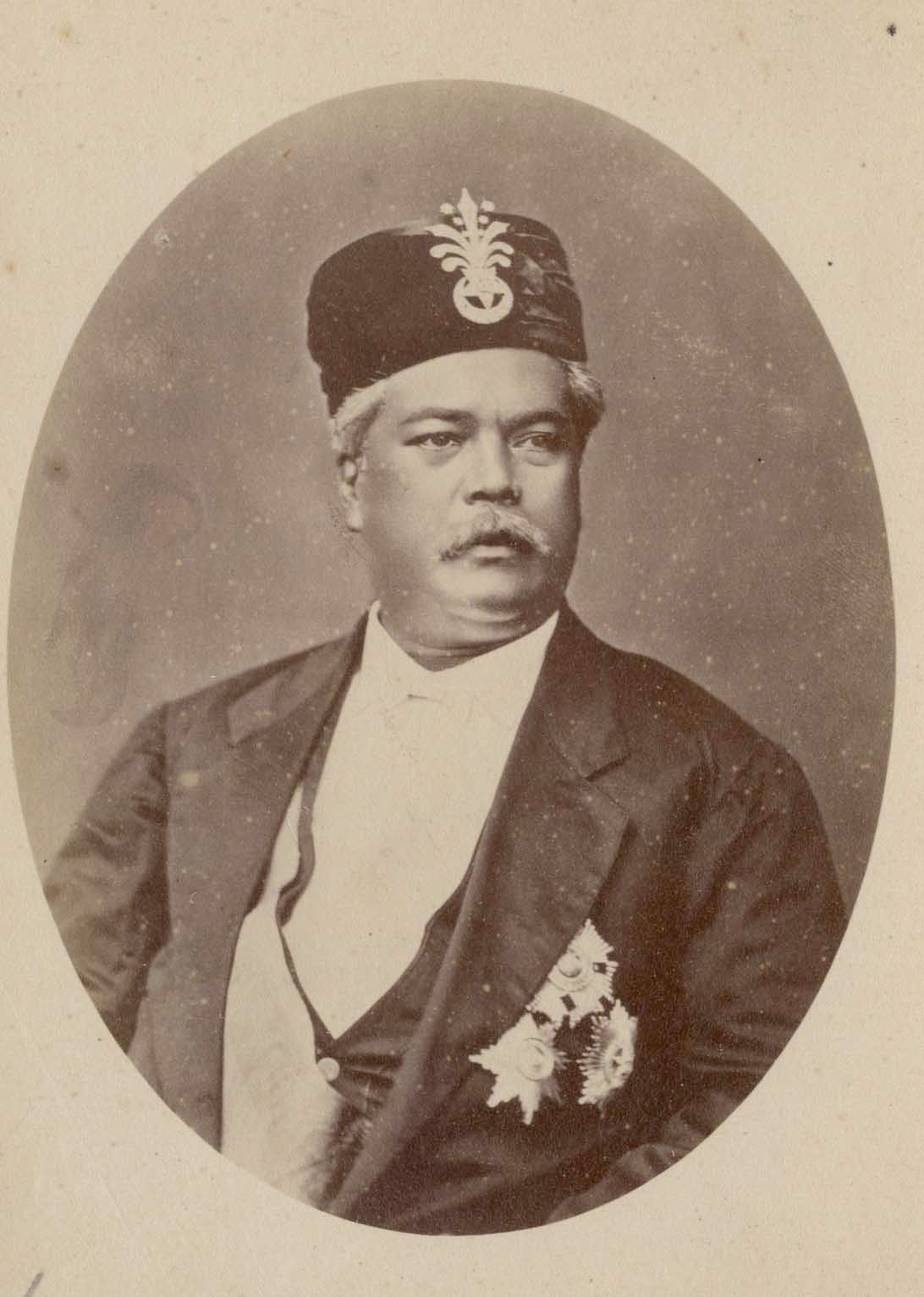
Abu Bakar Sultan of Johor, 1890s, Collection of the National Museum of Singapore
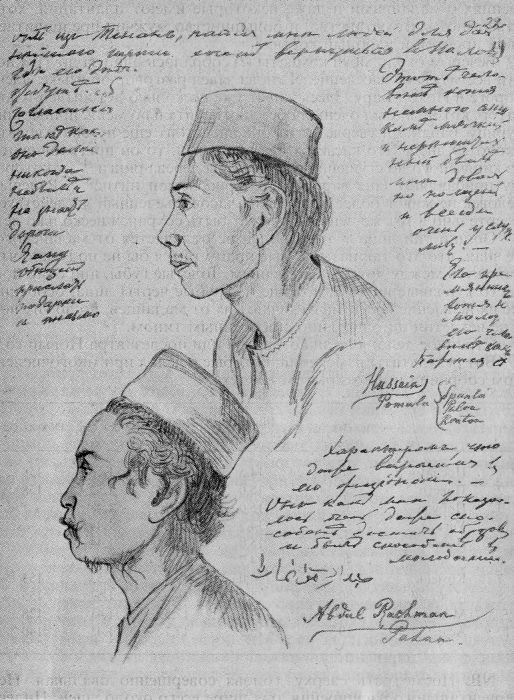
Malays Hussein and his nephew Abdul-Rahman (Abdurrahman)
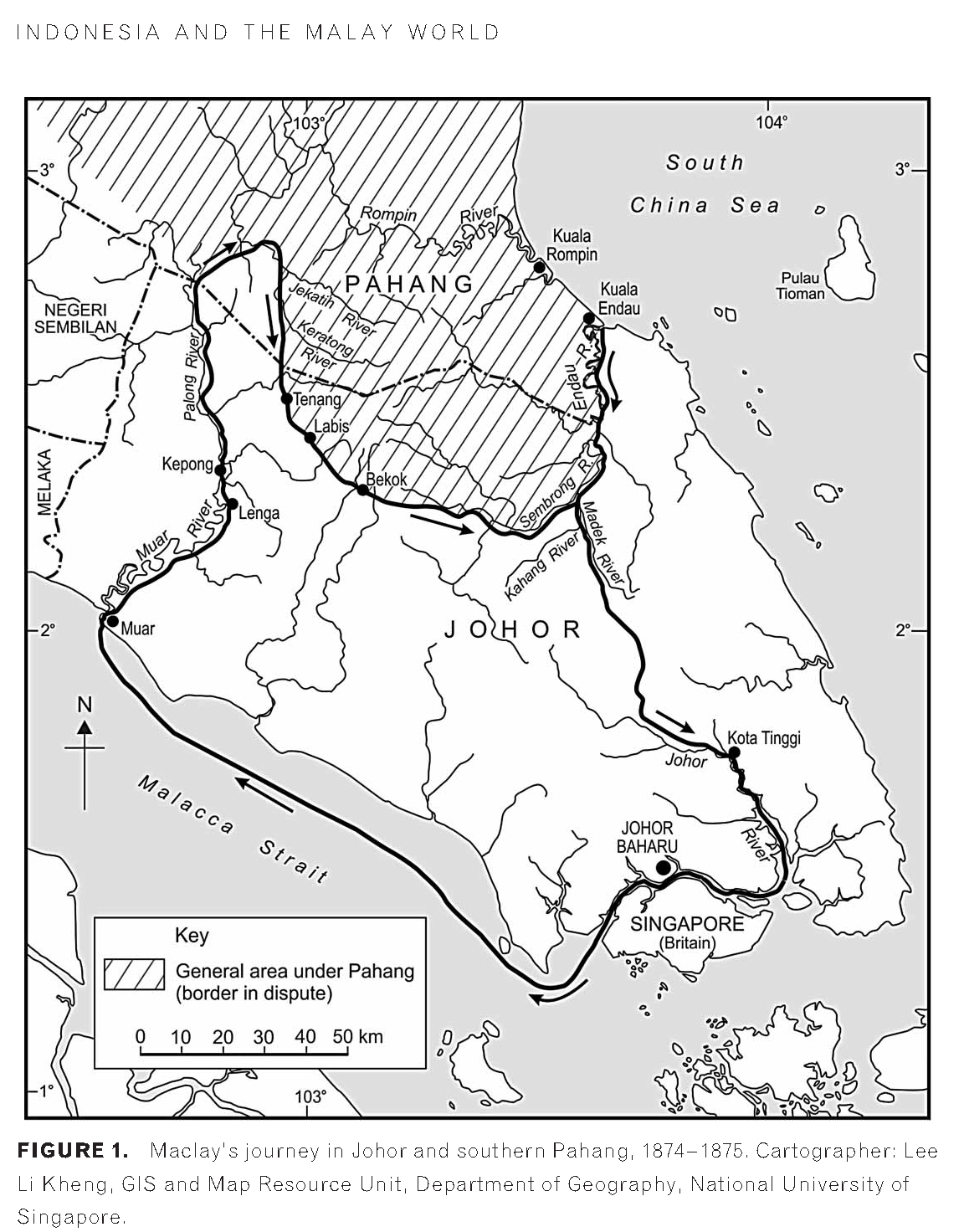
Map of Miklouho-Maclay’s journeys in Johor and southern Pahang, 1874-1875

Palace in Kota Bharu, Kelantan
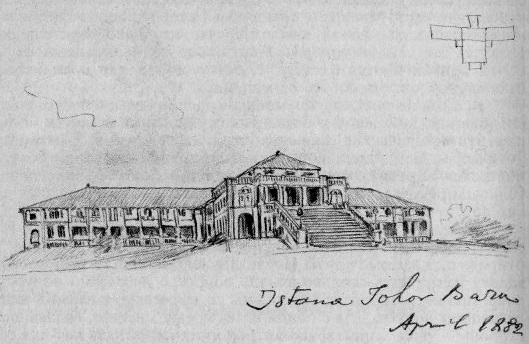
Sultan’s Abu Bakar palace in Johor Bahru. Drawing by Nikolay Miklouho-Maclay

The boy with sumpitan
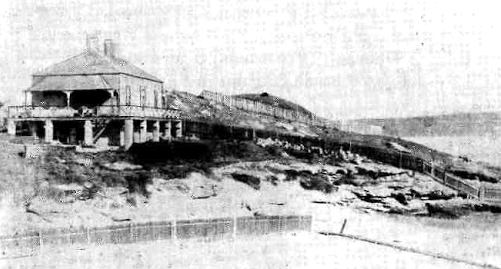
Views of the Biological Station in Watson Bay (Australia) in the 1880s and nowadays (1)
